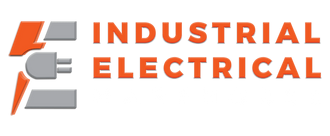PLC Expansion vs Smart I/O: Making the Right Choice for Your Industrial Automation
In the world of industrial automation, Programmable Logic Controllers (PLCs) are vital in managing complex processes efficiently. One key consideration in system design involves deciding between PLC expansion modules and distributed smart I/O modules. Selecting the right option significantly influences performance, scalability, cost, and ease of maintenance. This article guides system designers through critical decision-making factors to determine whether central PLC expansion or smart distributed I/O best meets their project requirements.
Understanding PLC Expansion Modules
A PLC expansion module refers to additional input/output (I/O) units directly attached to the main PLC chassis or installed closely in a centralized panel. These modules enhance the capability of the PLC by providing extra digital and analog inputs, outputs, and specialty functions.
Advantages of PLC Expansion Modules
- Easy Installation and Integration
- PLC expansions can be easily integrated into the existing PLC rack, simplifying setup and reducing system complexity.
- Cost-Effectiveness for Small to Medium Systems
- Centralized PLC expansion modules are more cost-effective for small to medium-sized systems because they eliminate the need for additional communication hardware.
- Direct PLC Communication
- These modules offer direct communication with the main PLC, ensuring minimal latency and reliable data transmission.
Limitations of PLC Expansion Modules
- Limited Scalability: Expansion modules are confined by the physical and processing limits of the PLC. This constraint can impact future scalability.
- Complex Wiring: Extensive wiring might be required if the system covers a large area, increasing installation time and cost.
Understanding Smart Distributed I/O Modules
Distributed Smart I/O modules are installed remotely from the central PLC. They communicate with the main PLC using industrial networks (Ethernet/IP, Modbus, Profibus), significantly reducing cable length and complexity.
Advantages of Smart Distributed I/O
- Enhanced Scalability and Flexibility
- Ideal for larger or geographically dispersed systems, distributed I/O allows easy scalability, adding modules wherever required.
- Reduced Installation Costs
- Smart I/O minimizes wiring by locating modules near field devices, cutting down cable costs and simplifying installation.
- Improved System Performance
- By processing data locally, distributed smart I/O reduces the workload on the central PLC, enhancing overall system responsiveness.
Limitations of Smart Distributed I/O
- Higher Initial Costs: Initial setup costs can be higher due to additional networking components and infrastructure.
- Potential Network Latency: Network issues or latency can impact real-time performance, though modern industrial networks generally mitigate these risks effectively.
PLC Expansion vs Smart Distributed I/O: Factors to Consider
When evaluating whether PLC expansion or smart distributed I/O is suitable for your project, consider the following factors:
System Size and Scalability
- Small to Medium Systems: Centralized PLC expansion modules offer cost-effective simplicity.
- Large or Geographically Dispersed Systems: Smart distributed I/O provides the best flexibility and scalability.
Installation and Wiring Complexity
- PLC Expansion: Simple installation but potentially extensive wiring.
- Smart Distributed I/O: Significantly reduced wiring complexity and installation costs.
Performance and Responsiveness
- PLC Expansion: Direct and faster communication with minimal latency.
- Smart Distributed I/O: Slight network latency, mitigated by modern industrial networking technologies.
Maintenance and Troubleshooting
- PLC Expansion: Easier centralized maintenance but may require extensive wiring checks during troubleshooting.
- Smart Distributed I/O: Easier troubleshooting through distributed modules, reducing downtime and enhancing system reliability.
Cost Considerations
- PLC Expansion: Lower initial investment, particularly for smaller systems.
- Smart Distributed I/O: Higher initial costs, offset by savings in installation and long-term maintenance for large-scale systems.
Practical Application Examples
Scenario 1: Small Manufacturing Line
For a small manufacturing operation, centralized PLC expansion modules provide a straightforward and cost-effective solution. The proximity of equipment reduces wiring complexities and ensures efficient performance.
Scenario 2: Large Automated Plant
In large plants, smart distributed I/O systems offer a superior advantage by reducing wiring costs, enhancing scalability, and allowing easy system expansion. These modules ensure smooth operation even across expansive facilities.
Scenario 3: Mixed or Hybrid Systems
Hybrid systems, incorporating both centralized PLC expansion modules and distributed smart I/O, combine the best of both worlds. Central modules can manage critical processes, while distributed modules cover peripheral or remote operations, ensuring efficiency and flexibility.
Best Practices for Implementing PLC Expansion and Smart Distributed I/O
- Assess Future Growth
- Evaluate current and future system requirements to choose the most adaptable option.
- Evaluate Network Infrastructure
- For smart I/O, ensure robust industrial networking to avoid performance issues.
- Perform Cost-Benefit Analysis
- Consider not just initial setup costs, but long-term operational savings, ease of maintenance, and potential downtime.
- Standardize Equipment
- Use standardized modules and components to simplify system maintenance and reduce spare parts inventory.
Conclusion
Choosing between PLC expansion and distributed smart I/O modules depends heavily on system size, complexity, performance requirements, and future scalability considerations. Centralized PLC expansion is optimal for simpler, smaller setups where cost efficiency and straightforward integration matter most. Conversely, smart distributed I/O excels in expansive, complex operations demanding flexibility, scalability, and reduced wiring complexity.
To further explore and select the right solution for your needs, visit our product collections:
Understanding your specific needs and leveraging these resources will ensure the best automation outcomes for your projects.


